Half of all shark species are now listed as endangered or critically endangered on the IUCN Red List, despite their critical role in ocean ecosystems. Steve Backshall shares his fascination with these misunderstood creatures – and how social media could be their unlikely saviour.
The shark cover image for this issue won the Bronze Award for the publicly-voted Cover of the Year at the Professional Publishers Association Awards 2022.
What do you find so fascinating about sharks?
We have an inherent fascination for apex predators – for the top-of-the-line predator that is at the evolutionary high-water mark, and sharks appear to be that.
They have super senses and can detect the movement of fish – that may already be long gone – from the wake they leave behind. They have the ability to sense the weak electrical fields given off by the moving muscles of their prey. They have an extraordinary olfactory sense – the ability to perceive minute amounts of a substance many, many times diluted in water. They are incredibly beautiful, very sleek and streamlined, but also incredibly complex.
And their presence encompasses the most important and interesting span of time on our planet – at least 400 million years, possibly more like 500 million years. They’ve lived through all the major extinction events, but they could disappear within this one that’s occurring right now. And that is baffling and frustrating, and it’s also something that I’ve seen with my own eyes.
I’ve been going back to the exact same dive site where I dived in 1991, 1997, 2000, 2003, 2007, 2012 and now, and seeing the decline in the reefs, in the mangroves and in the sharks, it hits you, it really hits you. It’s like seeing your local woodlands cut down – it has that same impact on you, and in a way that you just don’t get from reading about it in a newspaper.
How has Jaws affected the perception of sharks?
Jaws definitely was the start of it. I think before Jaws the knowledge of sharks was almost nothing. People had probably seen a little bit of sharks from Jacques Cousteau and his film The Silent World, but not much else. And then, all of a sudden, this great Hollywood blockbuster comes along, and it defines a lot of people’s perceptions of what a shark is.
But that was made when I was born, and I’m nearly 50. So it’s not the defining thing any longer, I don’t think – certainly not in the new and younger generation. I did an interview recently about sharks and the first thing that comes up is Jaws and shark attacks, and we’re making a conservation show [Sky’s Shark with Steve Backshall]!
If you were making a conservation show about tigers, every single interview wouldn’t have people going, ‘Oh, but what about all those people being killed by tigers, isn’t that awful?’
Why do sharks still have an image problem?
I think that some of it is down to the fact that the environment they live in is one where we immediately feel vulnerable, out of our depth, out of place, and where any predator there has the edge on us – and it does. Sharks are not of our animal group, they’re not warm-blooded mammals, and they don’t have big, dark, warm, puppy-dog eyes – they’ve got big, scary-looking teeth.
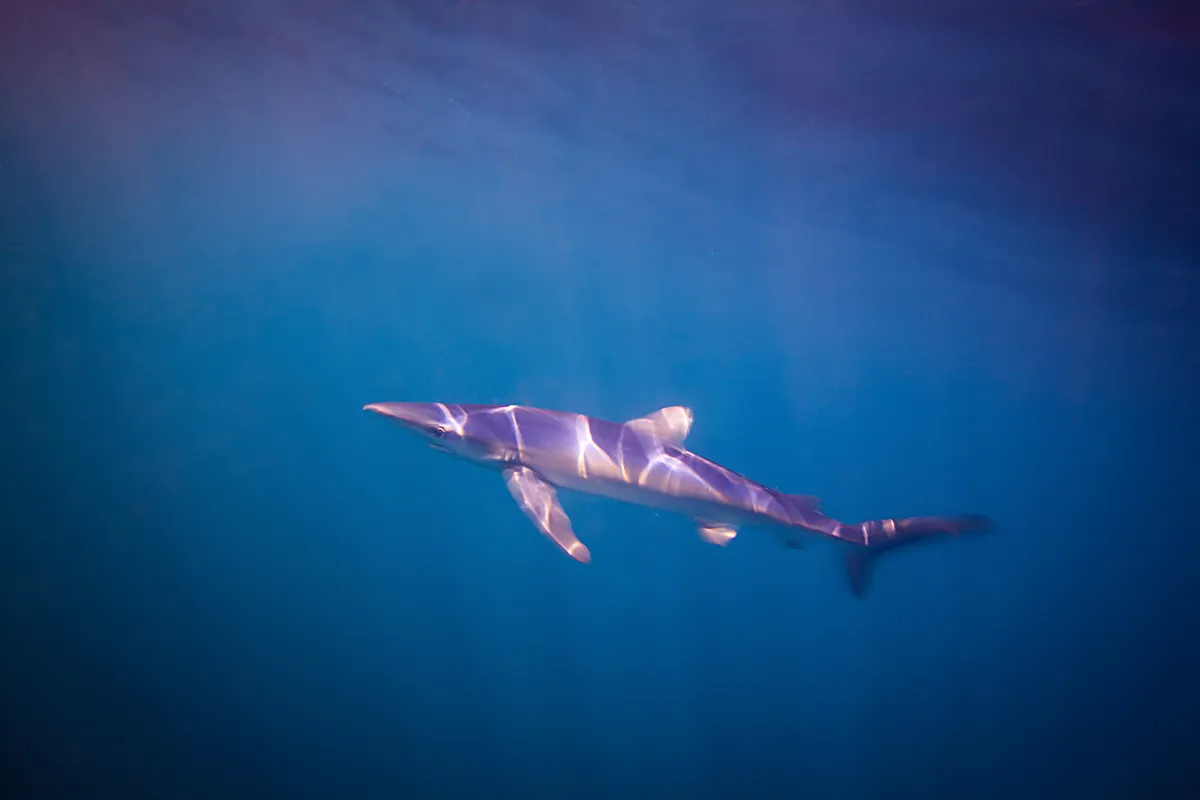
Somebody nearly gets bitten by a shark in Australia and it makes front-page news here in the UK. Someone has a basking shark swimming alongside their paddleboard here in the UK and it makes headline news by playing on all those fears.
But that doesn’t mean that it’s any representation of reality and, unfortunately, it’s led to this perception of sharks that is entirely erroneous and that allows us to justify persecuting them and, at very best, ignoring their fate.
How can we reverse the current public perception of sharks?
This is the only time I would ever give this as an answer to any serious journalistic question, but Instagram. I could probably name 10 different people right now who are big on social media and the only thing they do is sharks and shark conservation. And half of them are just beautiful people, looking like a mermaid/merman swimming alongside a great white, a tiger or a Caribbean reef shark.
They have millions of followers, purely because they show shots of them looking beautiful alongside a shark looking beautiful. And, as a result, they are changing the minds of an entire generation.
People will respond to stories that are relatively simple and have a really strong aesthetic, and something that grabs your attention instantly. With sharks, you can tell that story in pictures so quickly and so easily, and get people onside so easily, that I really, honestly believe it is an area where we can make a difference.
How can social media benefit sharks?
This new generation of activists, who are doing and achieving more for the environment than I ever will, are all sending their stories out to the world on social media. And also connecting with other like- minded people on social media in a way that just wasn’t possible even 10 years ago, let alone when I was a kid. And I know enough to know that it is one of the most critically important building blocks of the solution to most of our conservation problems.
With sharks, it’s a relatively simple story; it’s one that anyone can understand and it’s something that we in the media can address by showing people that sharks are more than just malevolent man-eating monsters; that they’re an unusual group of animals, many of which would fit in your pocket, many of which have elements of biology that we simply do not understand or know about; and that they need our help.
Is fishing or shark finning the primary threat to sharks?
Shark finning is not the number one cause of shark mortality. So at present the statistics, I think, are that each year an estimated 270 million sharks are killed and 73 million of those are taken purely for their fins. The bigger cause of mortality is being targeted as food (the entire shark, not just the fins) or caught as bycatch.
One of the biggest shark fisheries in the world is in the North Atlantic, and it’s actually the European fleets that are responsible, particularly those from Portugal and Spain. One of the main causes of emotional turmoil when the UK pulled out of the EU was that we lost so much of our potential voice to affect positive change in fishing practices.
It’s not just the Chinese who are responsible; it’s not just the Malaysians, the Indonesians, the Vietnamese. You know, Portugal and Spain catch more sharks than any of those nations, and they trade it to places like Hong Kong and Taiwan.
But I’ve been to fish markets here in the UK where there are crates and crates and crates of shark, which are mostly destined to be sent and sold overseas. So addressing our fishing practices back home is hugely important too.
We had a rare win in shark conservation earlier this year when the personal fin allowance was repealed, which was one of those very rare causes for celebration. Until then, an individual coming into this country could bring in a 50kg personal allowance of shark fins. And when you see what a reduced shark fin comes down to, you realise how many hundreds of sharks’ fins one person could potentially bring into this country. But it was a nonsense and it’s been repealed, and that’s great.
Is shark tourism good or bad?
Honestly, I could write a PhD thesis on this. It is a massive subject and impossible to say if it is good or it is bad, because there are some elements of shark tourism that are terrible and there are some elements of it that are potentially a crucial part of the puzzle in maintaining their future.
Shark tourism is a huge part of the reason why we have fully functioning shark sanctuaries, such as those around the Bahamas, Maldives, Cocos, Galápagos and Malpelo, and around other places where shark tourism is a major part of the economy.
The sharks become critically important to the people that live there. And the second you’ve done that, you provide a reason for them to want to protect the sharks; to make sure they can’t be fished and can’t be taken out the sea – and it works, it really, really works.
You can be in Bimini, an island in the Bahamas about 80km away from Florida, and have critically endangered great hammerhead sharks just going around and around and around you. But travel just 25km away and they can be caught on a rod and line, and killed. The sanctuaries really work, really function, and it’s shark tourism that drives their raison d’etre.

The flipside of that is that there are a lot of interactions with sharks that are macho. They are kind of driven by the whole Jackass culture and, inevitably, they are going to end in tears. The sad part of that is that when someone – particularly someone who has a big social media following or someone who has a television presence – gets bitten by a shark, the negative impact on the sharks will be huge.
Is cage-diving with sharks ok?

In recent years, there have been a number of high-profile incidences where sharks have been badly injured or even killed through cage diving. So can it be done responsibly?
“A lot of it is down to the individual tour operator,” says Steve. “If they’re prepared to just have you in the cage and have sharks swimming backwards and forwards relatively close to you, then it should be fine.”
The problems come when tour operators use bait to draw the sharks right alongside the cage. “In South Africa, where the visibility might only be a couple of metres, it has to be literally alongside the cage, and that’s where potential bad things can happen.”
Is trophy hunting a problem for sharks?
The great white shark matures at, very best, 15 years of age – some people would say it’s more like 30 years. It reproduces very slowly. Other species have just one or two pups. So you take one of those animals out of the population and you’re having a massive impact on the future of that species. So why is it acceptable for people to be going out and killing them for a photograph?
We were working in the Bahamas, with tiger sharks, oceanic whitetips, great hammerheads – all big shark species – and I would conservatively estimate that 30 per cent of them were trailing hooks and lines. Some were from long-line fishing but the majority were from sport fishing, and people were very deliberately targeting the biggest and the most impressive individuals for a fight and a photograph.
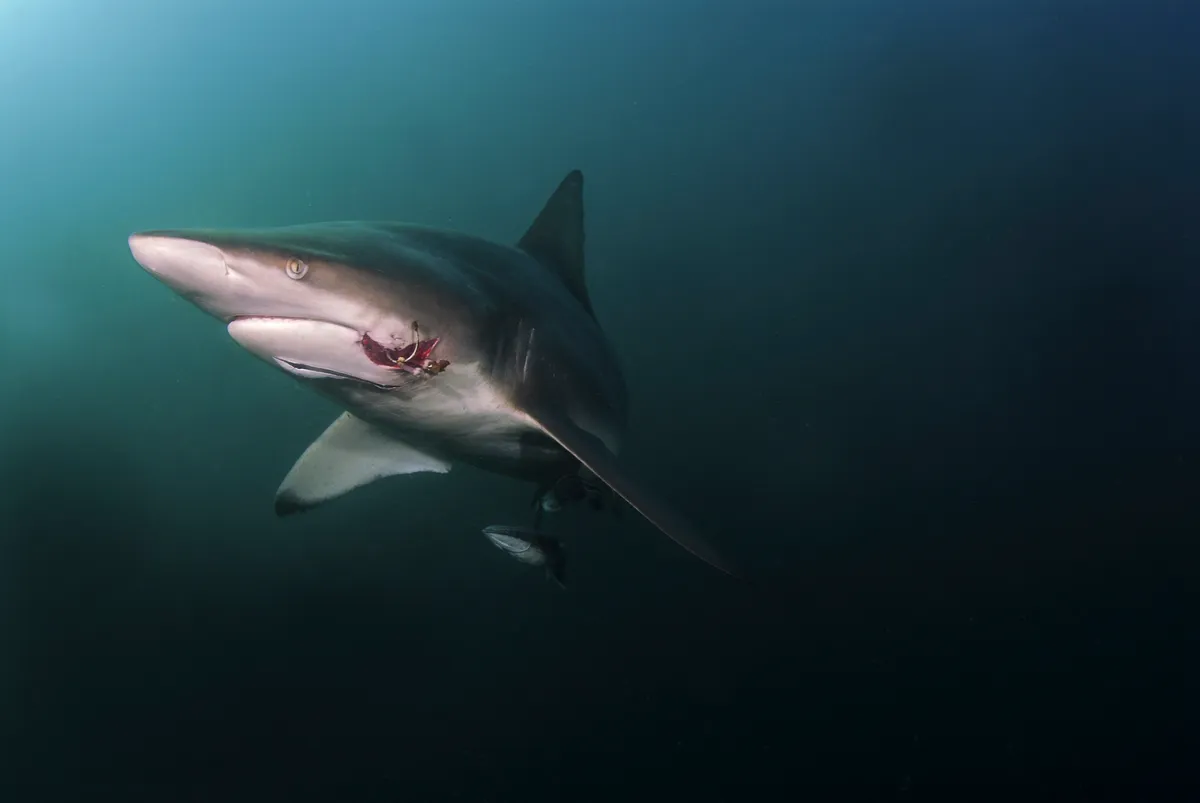
The thing that really strikes me about sport fishing is that you’re swimming underwater with these incredible and incredibly beautiful animals, and they’ve got great hooks and lines and sinkers and teasers dangling off them into the water – and that’s kind of accepted.
If you were in Rwanda or Uganda and you were photographing mountain gorillas and 30 per cent of them were carrying snares, then people would be up in arms, wouldn’t they? They’d be outraged. But because it’s a fish, we’re not, or we consider it’s okay.
Sharks in the UK
Did you know that more than 40 species of shark are found off the British coast?
Steve says: “A lot of people, even biologists, may not realise quite how many species of shark we have in our seas. I’m a shark fanatic and I didn’t realise that we’d had scalloped hammerheads coming through our waters or Greenland sharks washed up on our shores.
“My favourite shark encounter last year was with blue sharks off the coast of Cornwall. It took the best part of 45 minutes before they showed up, but we then had up to 20 individuals, the biggest of which was 2.5-3m in length, literally nose-to-nose with me. And that’s off the coast of Penzance!
“There are also fledgling industries offering dives off the Pembroke coast, and I’ve had tope, smooth hound and lesser-spotted catsharks right in front of me.
“We did a remarkable dive in a Scottish sea loch, not far from Oban, looking for gigantic flapper skate. We didn’t find them, but we did find a nursery of their mermaids’ purses, and they’re huge! Holding them up to the light and seeing that tiny, wriggling silhouette of a critically endangered species, in a Scottish sea loch, surrounded by all these bizarre anemones, brittlestars and other weird and wonderful things, was one of the most unexpected dives I’ve ever had.
“If you’re looking for basking sharks, there are pretty stringent rules about how you are allowed to interact with them. You can snorkel and sit on a kayak or surfboard at the surface, and a basking shark might swim right past you, but you shouldn’t power towards it as it will disappear, and you’ve potentially interrupted its feeding strategy or influenced its courtship. Plus, you might have ruined the experience for someone else hoping to see that basking shark!

Acting with respect is incredibly important but, at the same time, I think that a proper interaction with British sharks is something that can be beneficial. A lot of people wouldn’t even realise that you could see sharks in our waters, but you can, and it can be absolutely spectacular if done right.”
Steve Backshall's favourite sharks
Blue shark (Prionace glauca)
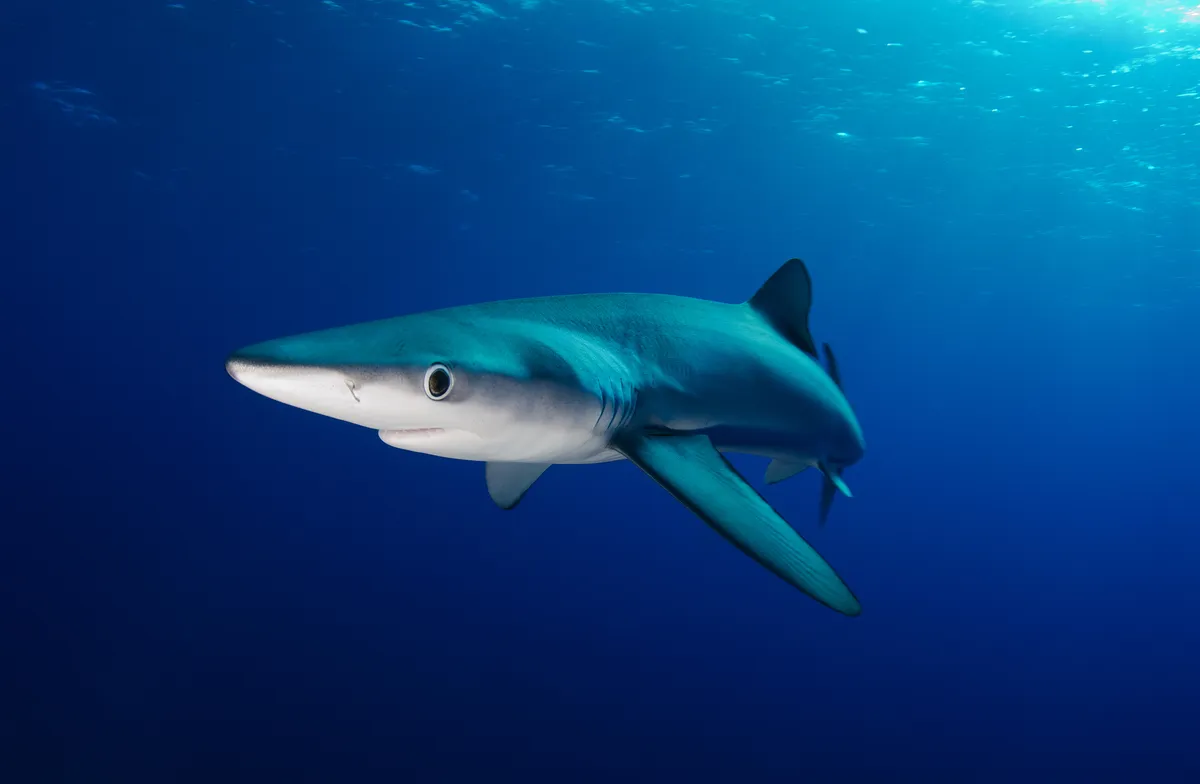
“Sleek with slender elongated lines and a transfixing azure blue colour. They have a grace underwater. I have experienced individual animals that are tactile and enjoy physical contact. They’re utterly beautiful and one of our own here in the British Isles.”
Thresher shark (Alopias spp.)
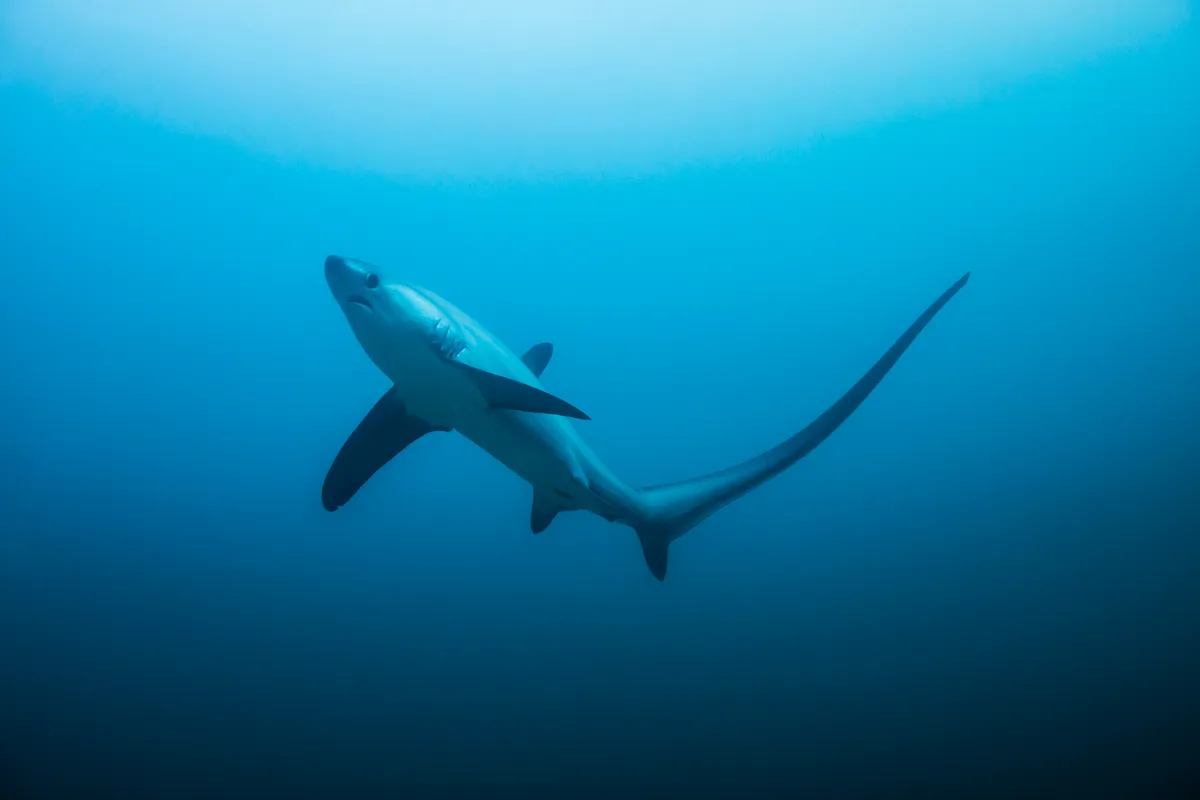
“It’s been hypothesised for hundreds of years that the giant tail of the thresher is used as a whip to corral and then incapacitate the fish that it feeds on. But it’s only within the last few years that it’s actually been filmed happening. I’ve been lucky enough to dive with them – they are hypnotic and utterly bizarre.”
Oceanic whitetip shark (Carcharhinus longimanus)
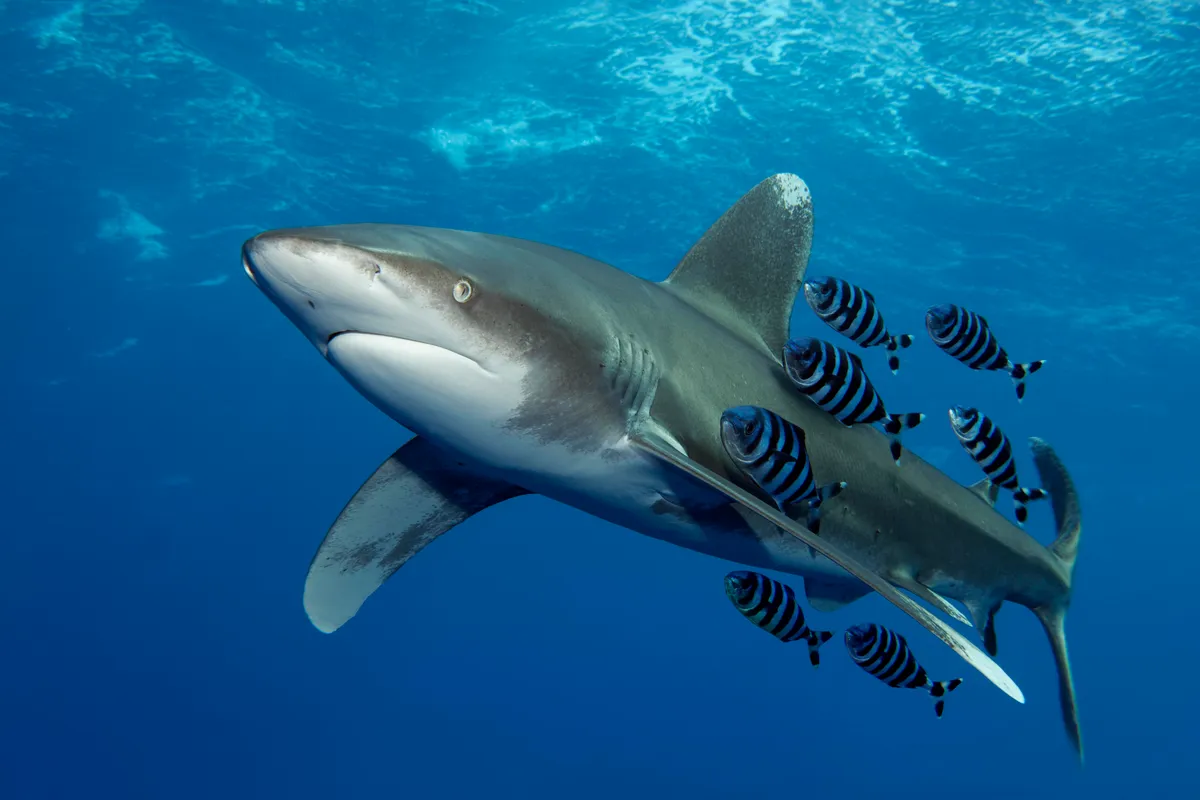
“While filming this series I had the opportunity to free several oceanic whitetips that had been snagged and caught in hooks and lines. Seeing a critically endangered species swim away, hook-free, released by your own hand, is something really special; something that stays with you.”
Small-spotted catshark (Scyliorhinus canicula)
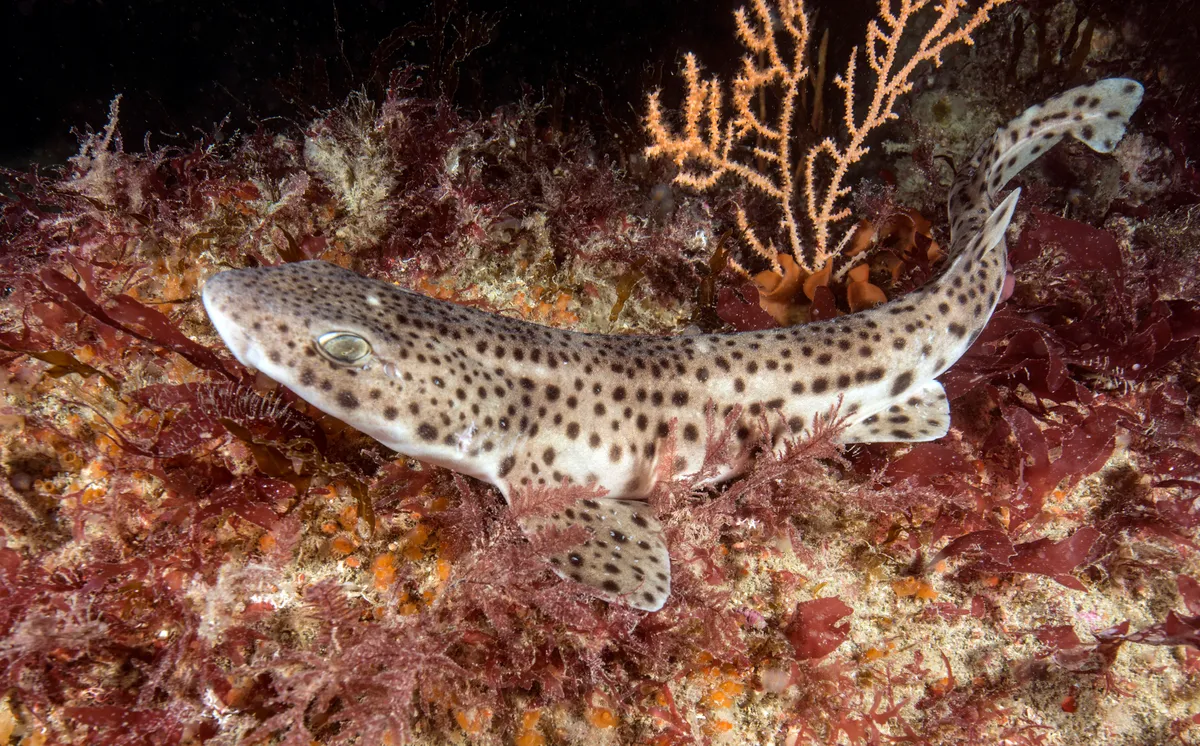
“Very recent research has shown that under the correct conditions, using UV light at night, small-spotted catsharks glow in the dark. We have them right here in the kelp forests of the UK, off the coasts of Wales and Cornwall – that is amazing.”
Basking shark (Cetorhinus maximus)
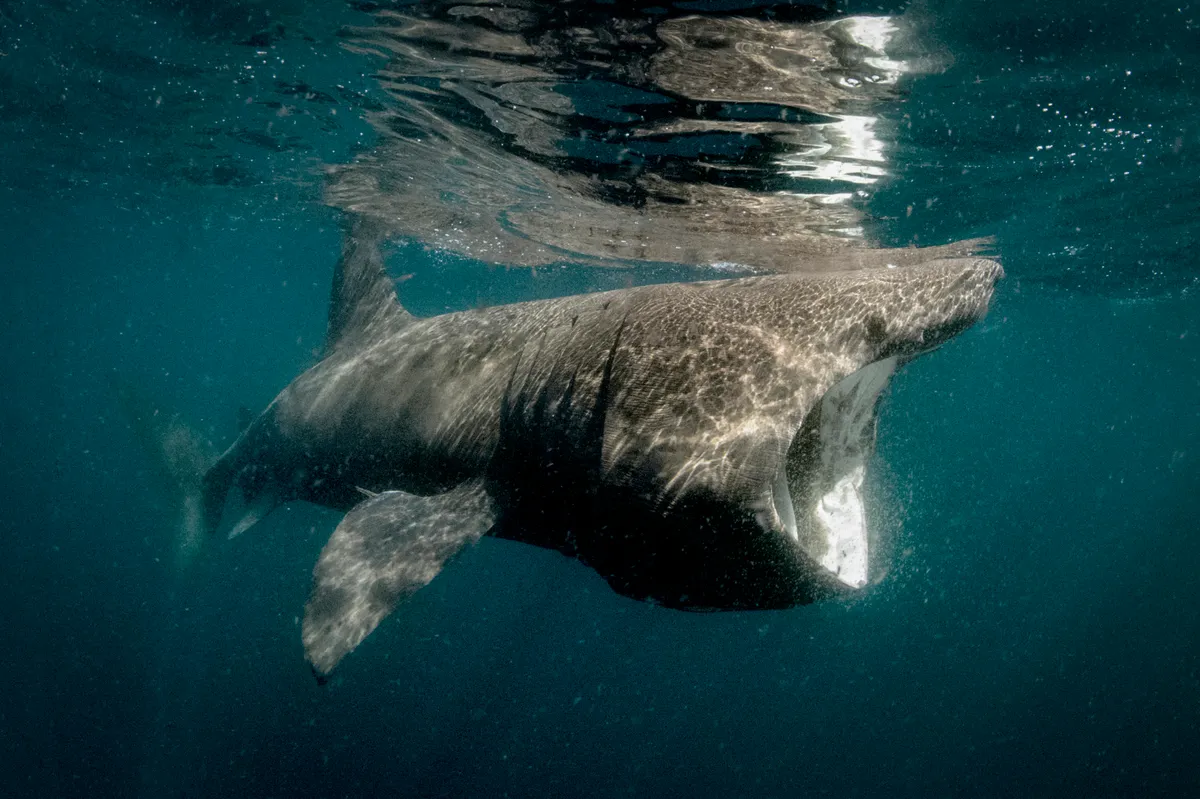
“Despite the fact that this is a native species here in our well-inhabited islands, we still don’t know where these sharks go for the years that they are not here. We don’t know where they mate, we don’t know where they pup – it’s never been seen happening! None of these critical elements of their life history have ever been recorded.”
